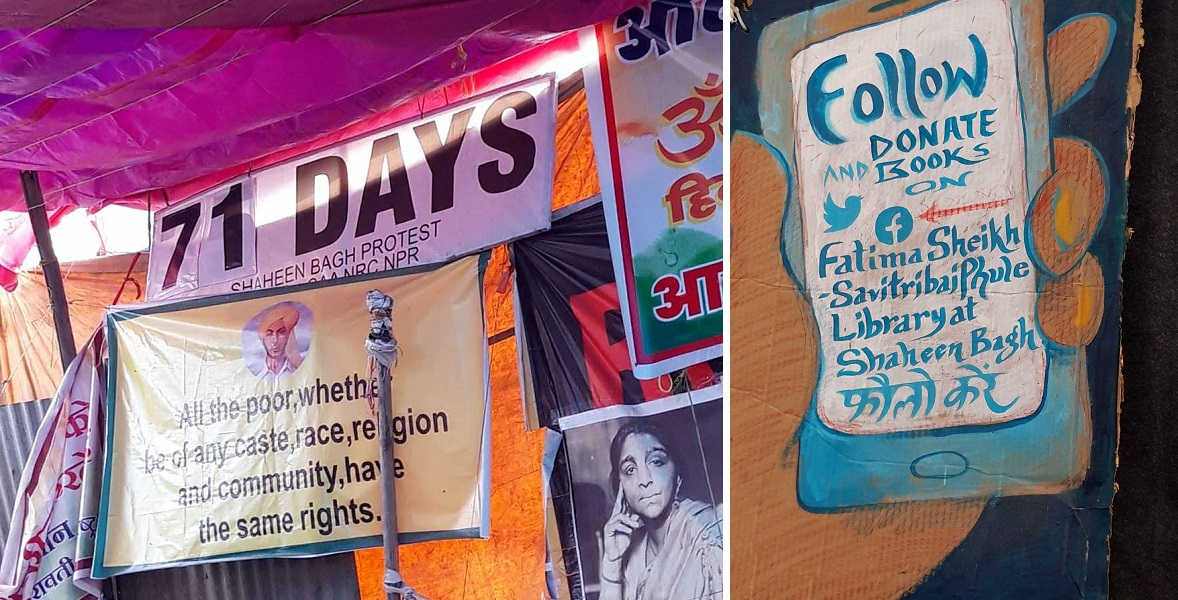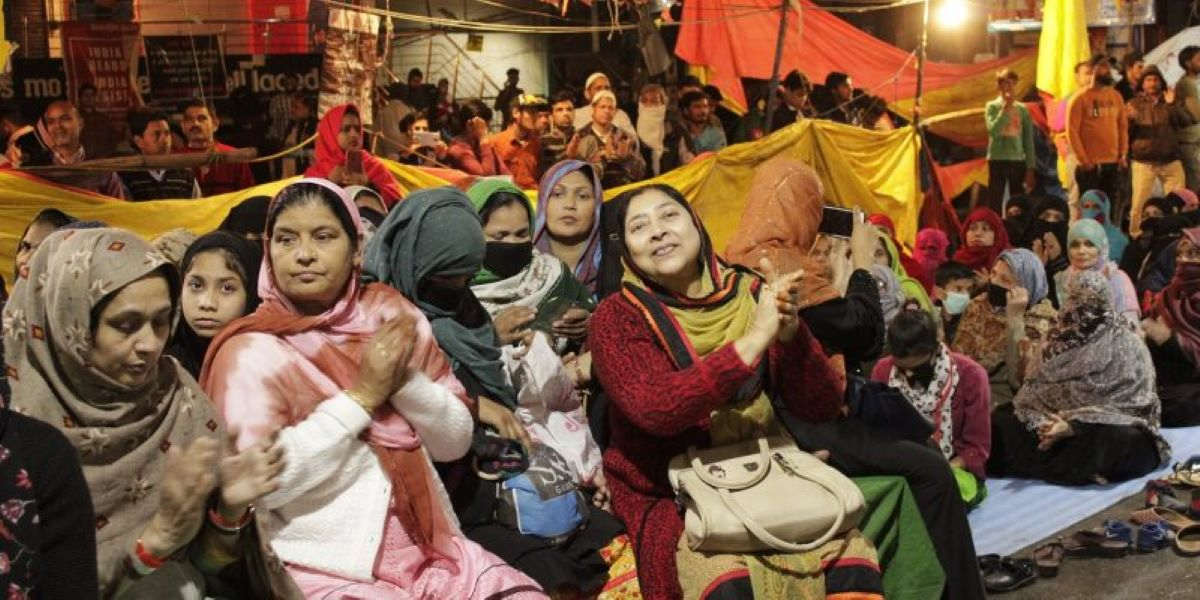Earlier this year, before Covid-19 took over the world, a women-led occupation in a South Delhi neighbourhood caught international media attention. The Shaheen Bagh protests had started in mid-December when around a dozen women blockaded a highway in the predominantly Muslim neighbourhood. Within weeks, they had grown to hundreds and then thousands, fast becoming a symbol of the resistance to the Citizenship Amendment Act (CAA) legislated by Narendra Modi’s fascist government. The occupation, along with the similar protests it inspired across the country, was not only a political protest addressed by various speakers but also a creative and educational space fostered by the women for themselves and their children to talk, learn, read and paint.
The CAA – intertwined with a proposed National Population Register (NPR), a precursor to a National Register of Citizens (NRC) – proposes a new model of citizenship based on religion, undermining India’s secular constitution. Many poor Indians in rural areas would likely be excluded from the NPR due to lacking documents showing their birthplace or name, particularly women who have moved to new villages or towns after marriage. Through a sleight of hand, the CAA would cause millions of Muslims across India left off the NPR to lose their citizenship.
Feminist solidarities
I saw for myself the protest at Shaheen Bagh on 23 February. The following day, a state-sponsored anti-Muslim pogrom took place in north-east Delhi, leaving thousands homeless and sparking solidarity protests globally, including in the UK. But the women occupying Shaheen Bagh and other sites across Delhi promptly returned to continue their protest in the days following these horrific attacks. On the day of my visit, the sit-in had lasted uninterrupted for 71 days, as written in large figures on the wall behind the stage, laden with painted signs and posters.
The size of the protest instantly struck me: it extended well beyond the main marquee occupied by rows of seated women of all ages, along with their children. Some areas, like the libraries – ranging from children’s teaching spaces to arenas for student discussion – felt intimate and detached from the marquee, yet projecting the same firmly feminist message of resistance. One library was named after Fatima Sheikh and Savitri Bai Phule, both pioneers of women’s – especially Dalit women’s – education, evoking ongoing solidarities between Muslims and oppressed castes. It was also inspiring to see men gathered around the railings surrounding the women’s seating area. It was a visual embodiment of a staunch solidarity which yet did not encroach on this arena of resistance created by, and decidedly for, women and their children.
Anti-CAA and feminist messages permeated the children’s artworks and drawings of Indian flags displayed around the children’s library, a small raised platform that was hosting a music workshop during my visit. This focus on reappropriating the concept of the Indian nation was further exemplified by a large poster on one side of the marquee reading: ‘What is the nation? It is the farmers and labourers making 95% of its population’. The socialist overtones of this message encapsulated the occupation’s intersectional politics, centering those marginalised not only by the CAA but by the broader neoliberal economic approach of Modi’s government.
Stalls run by the Sikh community distributed free food, cooked by men and women in large quantities from early morning onwards. In this collaborative movement, people’s individual responsibilities – be it cooking, teaching, or poster-making – all contributed towards maintaining the radical politics of the space whilst rendering it livable and nurturing for those occupying it day and night.

CREDIT: ANANYA WILSON-BHATTACHARYA
Challenging perceptions
This comfortable, even somewhat domestic, character was integral to the site’s radicalism. Despite women’s increasing presence in public life in India, to take up public space for purposes other than work, is still often seen as illicit and taboo. The occupation has also challenged perceptions of Muslim women as inherently oppressed, which the Modi government has previously invoked through criminalising ‘triple talaq’ despite the resistance to this from Muslim women’s organisations. In this context, bringing a domestic Muslim women’s space unapologetically into the highly public sphere of a dusty Delhi main road – blurring the public/private boundary – becomes itself a radical act of resistance against the confining forces of patriarchy.
The occupation has challenged perceptions of Muslim women as inherently oppressed
Shaheen Bagh also challenged the Western gaze that often doesn’t identify radical arts spaces with the global South. These working-class, overwhelmingly Muslim women Delhi residents, were using creative means to proclaim that India is their home and their communities are not going anywhere. The occupation received widespread solidarity including visits from LGBT+ activists, Dalit campaigners and left organisations and individuals. It was a deeply inspiring reminder of the power of women’s resistance against fascism.
As I write, however, the Covid-19 pandemic is rapidly spreading through India, putting millions at high risk (there are currently over 1.2 million reported cases). A large proportion of workers across the country are unable to practise self-isolation due to overcrowding; thousands of migrant workers have lost their livelihoods and been forced to walk home across states or take non-stop trains with no access to food or water, many dying of starvation or exhaustion as a result. In line with the lockdown, Shaheen Bagh has been shut down, while anti-CAA artworks and graffiti at nearby Jamia Milia Islamia University have been tragically defaced by police.
But the struggle is not over. Since the lockdown, a growing number of student activists – overwhelmingly Muslims from Jamia Milia, including pregnant activist Safoora Zargar – have been framed and arrested in connection with the Delhi pogrom. This has reignited the anti-CAA movement online, and Zargar has been granted temporary bail. Activist Uzma Nawaz tells me the spirit remains alive; #ShaheenBaghzindahai (Shaheen Bagh lives on) has recently been circulating on Twitter. While the NPR has been delayed, plans are being made to resume the protests post-lockdown, including among many of the older women that are less active online. Sadaf Jafar, a participant in the Lucknow sit-in, told Outlook magazine in late March: ‘We are taking a break, we will continue the fight’.











